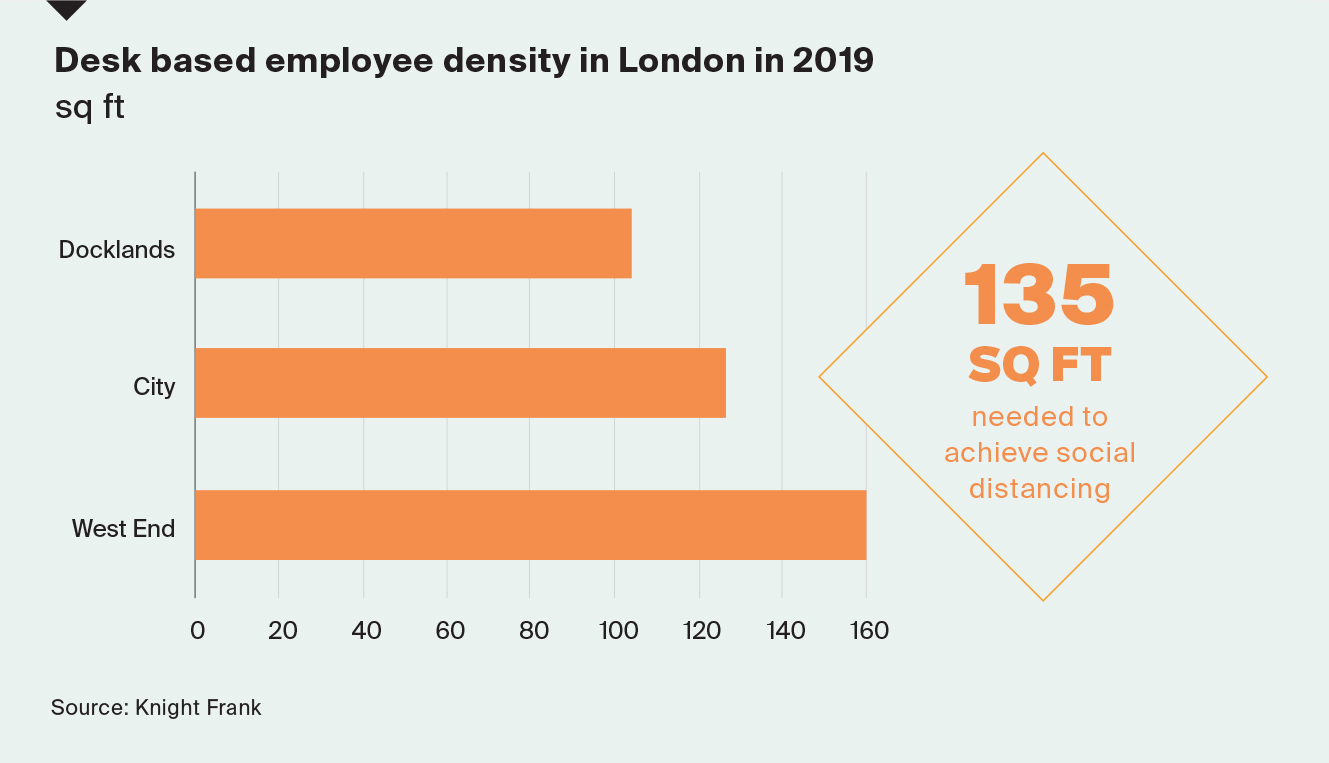Preparing for the new "normal": understanding employee densities in London
As social distancing beds in and becomes part of the new normal, even in markets emerging on the other side of the COVID-19 pandemic, we investigate how space allocated to every desk based employee in London has evolved over time.
2 minutes to read
The West End emerges as the most generous market, with an almost consistent 160 sq ft apportioned to staff over the last five years, enabling the safe enforcement of social distancing, which requires 135 sq ft of space per person. This is of course reflective of the nature of occupiers in this part of London, which typically tend to have lower occupational densities, such as hedge funds.
For markets like the City and Docklands, rapid growth in employment over the last five years, has resulted in higher staff densities.
This is in part due to the chronic shortage of space in the market. The City, at 126 sq ft per employee outperforms the Docklands, where the staff density ratio stands at 104 sq ft per person, 23% below the minimum threshold to maintain social distancing.
"Occupiers may eventually start to think about longer term ways to house their staff and this could involve leasing additional space"
This has been underpinned by densification stemming from banking and back office operations homing in on this submarket.
Notwithstanding any current inertia around expanding office footprints in the current economic climate, occupiers may eventually start to think about longer term ways to house their staff and this could involve leasing additional space.
In theory, this would suggest that the City needs another 8.3m sq ft of office space to allow for social distancing, while the Docklands would require 4.9 million sq ft. Factoring in stock due for delivery this year, which is not already spoken for, this would equate to another 6.1m sq ft and 4.4m sq ft, respectively.
Rather than committing to new space to accommodate their workforces, it is likely that businesses will instead turn to the flexible office market as a stop-gap solution due to the short term nature of commitments. Furthermore, the design and layout of offices will need to be revisited as businesses reassess how best to house their staff in safe and secure environments.
